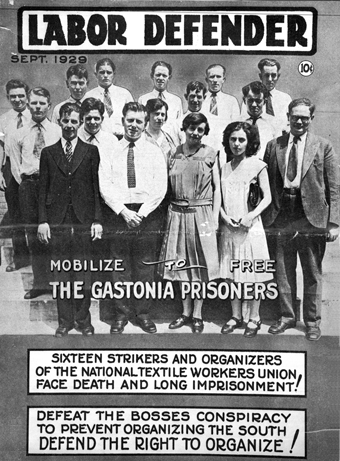
On March 30, 1929, workers at the Loray Mill in Gastonia began a walkout. Two days later, they called a general strike. At the time the five-story building covering more than a half-million square feet and was the world’s largest factory under one roof. Labor unions targeted it for organization because of its size, and the Rhode Island owners caused resentment by erecting a tall fence around the property and pressing for greater productivity.
The National Textile Workers Union, widely acknowledged to be under Communist influence, exploited the situation by sending activists to Gastonia. They argued that winning North Carolina was the key to the labor movement’s advancement in the South, and winning the Loray Mill was the key to winning North Carolina.
The strike dragged on through the summer and fall of 1929. O. F. Aderholdt, Gastonia’s chief of police, was shot and killed in June. Ella May Wiggins, a ballad singer and union sympathizer, was killed in September. The strike and associated violence dealt a setback to union efforts, bolstering anti-union sentiment both locally and, owing to the wide press coverage, across the state and region.
Today investors are working to transform the old mill to residential use.
Image from the State Archives.
The area around the mill is currently listed on the National Register of Historic Places.
For more about North Carolina’s history, arts and culture, visit Cultural Resources online. To receive these updates automatically each day, make sure you subscribe by email using the box on the right, and follow us on Facebook, Twitter and Pinterest.
